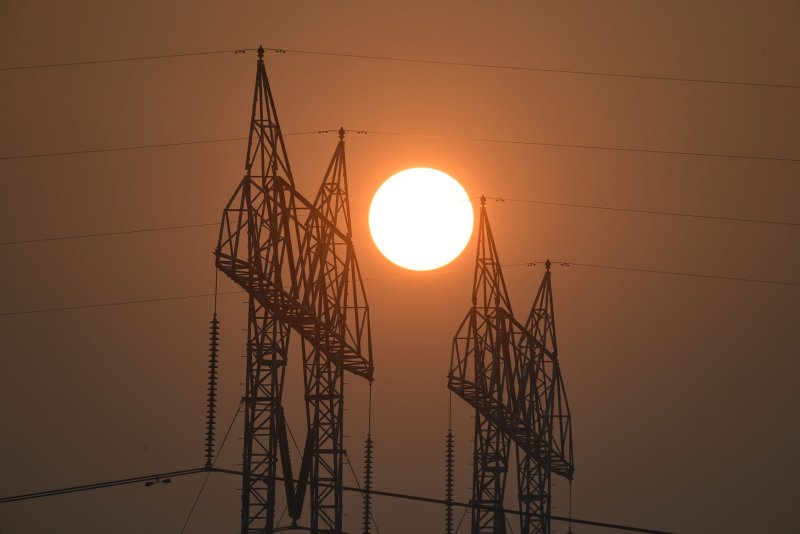The world must double existing power grid networks to 100,000 miles globally by 2040 to avoid missing the internationally agreed temperature rise targets and eroding energy security, the International Energy Agency warned Tuesday. File Photo by Terry Schmitt/UPI |
License Photo
Oct. 17 (UPI) -- The world must double existing power grid networks to 100,000 miles globally by 2040 to avoid missing the internationally agreed 1.5 degrees Celsius temperature rise target and eroding energy security, the International Energy Agency warned Tuesday.
Efforts to combat climate change and guarantee electricity supplies could be at risk unless policymakers and businesses take immediate action, including adding 50,000 miles of new grids, to cope with a demand surge from additional electricity production as the world transitions away from fossil fuels, the IEA said in a news release.
In what the IEA said was the first-of-its-kind stocktake report of grids around the world, the inter-governmental agency said it had found they were failing to keep pace with the rapid growth of key clean energy technologies such as solar, wind, electric cars and heat pumps.
"Without greater policy attention and investment, shortfalls in the reach and quality of grid infrastructure could put the goal of limiting global warming to 1.5 degrees Celsius out of reach and undermine energy security," it said.
Achieving all national climate and energy goals required adding or replacing 100,000 miles of power lines by 2040 -- an amount equal to the entire existing global grid -- according to country-by-country in-depth analysis carried out for the report.
With investment in new grids largely flat, funding needed to begin to be invested with a doubling of spending on grids to more than $600 billion required by 2030 as well as building resilience through digitalization of distribution grids and providing flexibility through demand response and energy storage.
Renewable projects nearing completion slated to produce 1,500 gigawatts of electricity -- equivalent to five times the amount of solar and wind capacity that was added worldwide in 2022 -- are awaiting connection to the grid.
"The recent clean energy progress we have seen in many countries is unprecedented and cause for optimism, but it could be put in jeopardy if governments and businesses do not come together to ensure the world's electricity grids are ready for the new global energy economy that is rapidly emerging," said IEA Executive Director Fatih Birol.
"This report shows what's at stake and needs to be done. We must invest in grids today or face gridlock tomorrow."
A scenario tested in the report that examined what would happen if slow grid investment and regulatory reforms hampered the rollout of renewables found cumulative CO2 emissions between 2030 and 2050 would be almost 60 billion tons higher due to additional fossil fuel consumption equal to the global power sector's total CO2 emissions since 2019.
The extra CO2 would put the global temperature rise well above the Paris Agreement target of 1.5 degrees Celsius, with a 40% chance of exceeding 2 degrees Celsius, the IEA warned.
The need for decisive action was urgent because modernizing and extending grids takes as much as 15 years from planning and commissioning to going live compared with 1 to 5 years for new renewables projects and less than 2 years for new charging infrastructure for electric vehicles.
Stronger international cooperation was vital given the shrinkage in investment in recent years in emerging and developing economies -- China excepted -- despite strong growth in demand for electricity demand.
"Ensuring the developing world has the resources it needs to build and modernize electricity grids is an essential task for the international community," Birol said.
"By mobilizing financing, providing access to technology and sharing best practices on policies, leading economies can help improve people's lives, strengthen sustainable development and reduce the risks of climate change."















